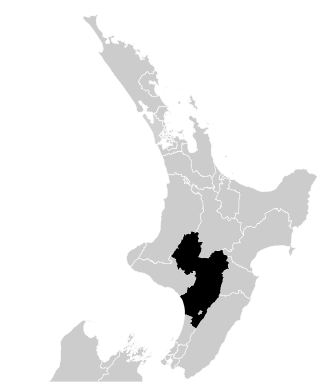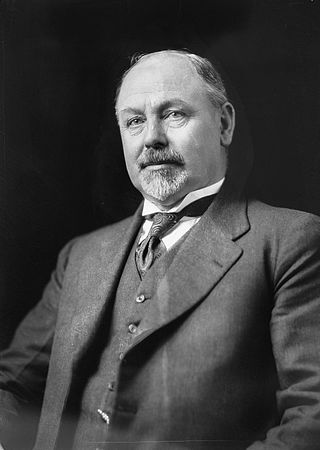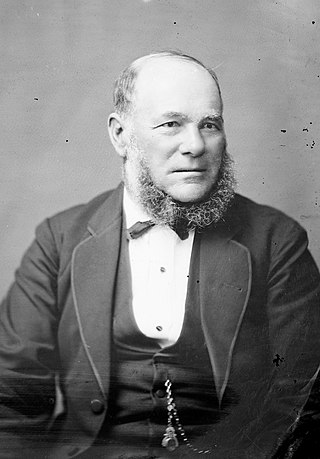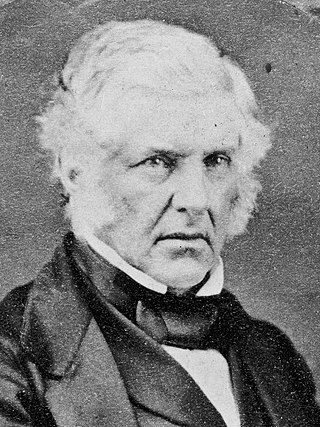The 2nd New Zealand Parliament was a term of the Parliament of New Zealand. It opened on 15 April 1856, following New Zealand's 1855 election. It was dissolved on 5 November 1860 in preparation for 1860–61 election. The 2nd Parliament was the first under which New Zealand had responsible government, meaning that unlike previously, the Cabinet was chosen by Parliament rather than by the Governor-General of New Zealand.

The 1879 New Zealand general election was held between 28 August and 15 September 1879 to elect a total of 88 MPs to the 7th session of the New Zealand Parliament. The Māori vote was held on 8 September. A total of 82,271 (66.5%) European voters turned out to vote, plus 14,553 Māori voters. Following the election, John Hall formed a new government.

The 1896 New Zealand general election was held on Wednesday, 4 December in the general electorates, and on Thursday, 19 December in the Māori electorates to elect a total of 74 MPs to the 13th session of the New Zealand Parliament. A total number of 337,024 (76.1%) voters turned out to vote.

Rangitīkei is a New Zealand parliamentary electorate, returning one Member of Parliament to the New Zealand House of Representatives. The current MP for Rangitīkei is Suze Redmayne of the National Party. She has held this position since 2023.

Whanganui is a New Zealand parliamentary electorate. It was first established in 1860 for the 3rd Parliament and has existed continuously since then.
Waimarino was a New Zealand parliamentary electorate that existed from 1911 to 1954, and from 1963 to 1972. It was rural in nature and was represented by four Members of Parliament.
Stratford is a former parliamentary electorate, in Taranaki, New Zealand. It existed from 1908 to 1946, and from 1954 to 1978. It was represented by six Members of Parliament.
Omata was a New Zealand electorate. It was located in Taranaki and based on the township of Omata. One of the original 24 electorates, it existed from 1853 to 1870.
Wanganui and Rangitikei is a former parliamentary electorate that existed from 1853 to 1860. It was represented by two Members of Parliament.
The Southern Division was a New Zealand parliamentary electorate in the Auckland Province from 1853 to 1860. It was a large two-member electorate south of the town of Auckland.
The Suburbs of Nelson is a former parliamentary electorate around the city of Nelson, New Zealand from 1861 to 1881.

Frank Franklin Hockly was a Reform Party Member of Parliament in New Zealand.
The 3rd New Zealand Parliament was a term of the Parliament of New Zealand. Elections for this term were held between 12 December 1860 and 28 March 1861 in 43 electorates to elect 53 MPs. Two electorates were added to this during this term, Gold Fields District and a new Dunedin electorate created by splitting the existing City of Dunedin into Dunedin and Suburbs North and Dunedin and Suburbs South, increasing the number of MPs to 57. During the term of this Parliament, six Ministries were in power.
Edward Allan Hargreaves was a 19th-century Member of Parliament in Canterbury, New Zealand.

William Hogg Watt (1818–1893) was a 19th-century Member of Parliament in the Manawatū region of New Zealand.
The Grey and Bell by-election 1858 was a by-election held in the Grey and Bell electorate during the 2nd New Zealand Parliament, on 17 May 1858, and was, the second by-election in the electorate.

The 1865 Town of New Plymouth by-election was a by-election held in the Town of New Plymouth electorate during the 3rd New Zealand Parliament, on 19 May 1865. The by-election was caused by the resignation of the incumbent, Charles Brown, and was won unopposed by Henry Sewell. Whilst Sewell was not a local resident, he was a member of the government through his appointment to the Legislative Council, the upper house of Parliament. Sewell accepted the invitation to represent the electorate, as him becoming a member of the lower house was seen to strengthen the government.
The 1875 Rangitikei by-election was a by-election held on 24 April 1875 during the 5th New Zealand Parliament in the Rangitikei electorate on the West Coast of the North Island.
The 1909 Rangitikei by-election was a by-election held during the 17th New Zealand Parliament in the Rangitikei electorate of the North Island. This was the sixth by-election since the Rangitikei electorate was established for the 1861 election. The previous by-election took place in 1892 and the following one took place in 1978. The Second Ballot Act 1908 was in force and in the first ballot, and Frank Hockly of the opposition Reform Party won the first ballot, but Robert William Smith of the governing Liberal Party was ultimately chosen in the second ballot.

The 1892 Rangitikei by-election was a by-election held during the 11th New Zealand Parliament in the Rangitikei electorate of the North Island. This was the fifth by-election since the Rangitikei electorate was established for the 1861 election. The previous by-election took place in 1880 and the following one took place in 1909. Robert Bruce, who had previously been the MP for Rangitikei between 1884 and 1890, won the by-election narrowly.








